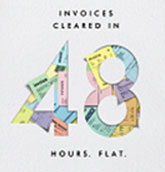 3 min read
3 min read Jan 24, 2024
Jan 24, 2024
All you need to know about Credit Card unbilled amount
Have you looked at your Credit Card statement and wondered what is unbilled amount in Credit Card? If you have made a purchase or transaction, how come it is not billed? Simply put, unbilled amount in Credit Card is the money you have spent on your card but the transaction hasn’t been billed for yet. Understand the unbilled amount in Credit Card can help you handle your finances wisely. Read on to know more
Unbilled amount in a Credit Card
The unbilled amount in a Credit Card is the outstanding transactions and unprocessed expenses yet to be included in your upcoming statement. It represents the pre-billing card activity that will affect your upcoming cycle and card payments.
For example, you have a Credit Card with a billing cycle that ends on the 15th of every month. On the 5th, you spend ₹5,000 and on the 10th, another ₹3,000. If you check your Credit Card account on the 12th, the unbilled amount will show ₹8,000, as these transactions haven't yet been billed in a statement.
Also Read: Know how to check your credit card balance and due amount
Ways to check the unbilled amount
Staying informed about the unbilled amount on your Credit Card is crucial for effective financial management:
1. NetBanking
Net Banking offers an easy way to understand what the unbilled amount in your Credit Card is. By accessing your account online, you can view your upcoming card statement balance and card charges not yet billed. This facility helps in keeping a tab on your card spending, ensuring you are aware of your recent activities and how they affect your finances.
2. Text message alerts
Enrolling on SMS alerts is a proactive way to stay updated about unbilled amounts on your Credit Card. These alerts provide immediate notifications, helping you understand the unbilled amount on your Credit Card in real time, ensuring that you are always on top of any new transactions done on your Credit Card.
3. Customer service
Contacting customer service is another effective method to inquire about the unbilled amount on your Credit Card. A conversation with a customer service representative can provide clarity, allowing you to ask specific questions and get detailed responses about your current Credit Card usage.
4. ATM
Using an ATM can sometimes offer insights into the unbilled amount on your Credit Card. Many ATMs provide an option to check Credit Card details, including the unbilled amount. This is a quick way to get a snapshot of your current credit status, especially if you are on the go.
5. Credit Card statements
Regularly reviewing your card statement is the key to understanding the unbilled amount in Credit Card. These include detailed listings of your expenses and help you track the unbilled amount in Credit Card over the statement period. This method is essential for those who prefer a detailed, historical view of their card usage.
6. Mobile app
Utilising mobile apps is one of the most efficient ways to stay updated on the unbilled amount in Credit Card. These platforms provide real-time updates and comprehensive overviews of all your transactions, making it easier to understand the spending.
Also Read: Understanding Credit Card billing cycle
Unbilled amount and outstanding amounts
Understanding the difference between the unbilled amount and the outstanding amount on your Credit Card is a necessity. Here's a breakdown of the two terms with examples:
Unbilled amount
The unbilled amount on a Credit Card is the total of all the transactions (purchases, cash advances, etc.) that you have made but which have not yet been included in your monthly Credit Card statement. This amount reflects your recent card activity that will be billed in the upcoming statement.
Outstanding amount
The outstanding amount is the total amount you currently owe to the Credit Card company. This includes all previously billed transactions that you have not yet paid. It is the cumulative balance that needs to be cleared to avoid interest charges and maintain a good credit score.
Let us consider an example. Assume your billing cycle is from the 1st to the 30th of each month. On the 15th, you check your Credit Card account.
Unbilled amount:
- You made a purchase of ₹3,000 on the 5th and ₹2,000 on the 12th.
- Since these transactions occurred after your last statement date and before the next statement is generated, they are part of the unbilled amount.
- Therefore, your unbilled amount as of the 15th is ₹5,000 (₹3,000 + ₹2,000).
Outstanding amount:
- Your last statement (generated on the 30th of the previous month) showed a balance of ₹10,000, which included purchases from the previous billing cycle.
- If you haven't made any payments towards this balance, your outstanding amount as of the 15th is still ₹10,000.
Conclusion
Now that you know what the unbilled amount in Credit Card means, you can effectively manage your Credit Card repayment. Regular monitoring through net banking, SMS alerts, customer service, ATMs, and online platforms ensures you are always informed about your unbilled amount Credit Card.
If you are considering a new Credit Card, Axis Bank Credit Cards offer a variety of benefits to suit different lifestyles and spending habits. From rewarding reward points to exclusive discounts and robust security features, Axis Bank provides a card for every need. An Axis Bank Credit Card could be an ideal choice for those seeking a blend of convenience, rewards, and financial control.
FAQs
Q1. Do we need to pay the unbilled amount?
No, you do not need to pay the unbilled amount immediately, as it only becomes payable once it appears in your Credit Card statement.
Q2. What happens if we pay the unbilled amount on a Credit Card?
If you pay the unbilled amount on your Credit Card, it can decrease your upcoming statement balance, but it's not a common practice since this amount is not yet due.
Q3. When does the unbilled amount get charged to the next billing cycle?
The unbilled amount gets charged to your next billing cycle once your current billing cycle ends and the next one begins.
Q4. Are there any penalties for not paying the unbilled amount on time?
No, there are no penalties for not paying the unbilled amount on time, as it is not due until it is billed in your statement.
Q5. Can I set up notifications or alerts for changes in the unbilled amount?
Yes, most Credit Card issuers allow you to set up notifications or alerts for changes in your unbilled amount.
Q6. What transactions contribute to the unbilled amount?
Any new transactions made with your Credit Card, such as purchases, cash advances, or any fees charged by the issuing company, contribute to the unbilled amount.
Disclaimer: This article is for information purpose only. The views expressed in this article are personal and do not necessarily constitute the views of Axis Bank Ltd. and its employees. Axis Bank Ltd. and/or the author shall not be responsible for any direct / indirect loss or liability incurred by the reader for taking any financial decisions based on the contents and information. Please consult your financial advisor before making any financial decision.












